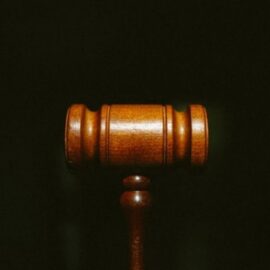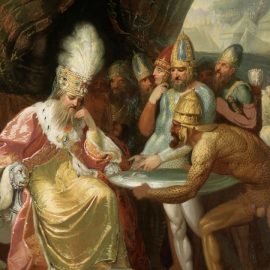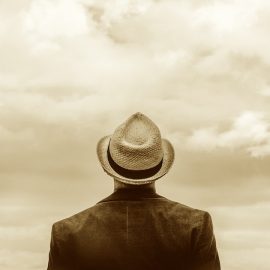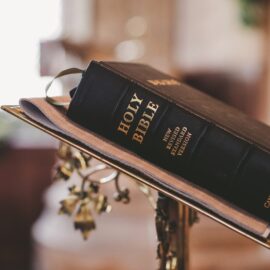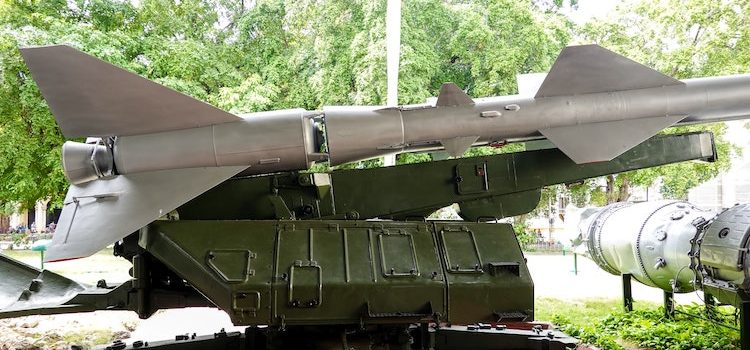
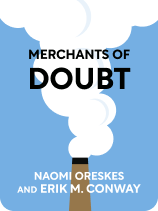
This article is an excerpt from the Shortform book guide to "Merchants of Doubt" by Naomi Oreskes and Erik M. Conway. Shortform has the world's best summaries and analyses of books you should be reading.
Like this article? Sign up for a free trial here .
What was the truth regarding missile defense during the Cold War? How did doubt-mongering impact the debate?
In Merchants of Doubt, historians Naomi Oreskes and Erik Conway look at doubt-mongering in several contexts, including strategic missile defense. They discuss the science and how certain merchants of doubt entered the arena and affected public awareness and policy.
Read more to learn how merchants of doubt impacted the missile defense narrative.
The Science and Doubts Surrounding Missile Defense
The tobacco industry pioneered techniques for manufacturing doubt when scientists discovered that smoking caused cancer. Unlike tobacco, where there was a lot of evidence that it caused health problems, the science around strategic missile defense was all projection (the only way to get evidence would be to start a nuclear war).
The 1975 CIA National Intelligence Estimate
In 1975, the CIA and other U.S. intelligence agencies published a National Intelligence Estimate (NIE) that concluded that the U.S. was stronger than the Soviets in three key areas:
- Intercontinental ballistic missiles (ICBMs). The CIA thought that the Soviet ICBMs weren’t very accurate, so if the Soviets fired first, their missile would miss most of the U.S., leaving enough weaponry undamaged to retaliate.
- Air defense system. The CIA didn’t think the Soviet defense system could keep out low-flying U.S. bombers.
- Submarine location. The CIA believed that the Soviets couldn’t locate or defend against U.S. submarines. They also didn’t think the Soviets would figure out how to do this for at least a decade.
The MOD’s Response
Edward Teller, a hawkish physicist, was a member of the President’s Foreign Intelligence Advisory Board, one of the agencies that reviewed the 1975 NIE. Teller didn’t agree with the CIA’s assessment of the Soviets and thought their capabilities were beside the point anyway—what the U.S. needed was to prepare for the worst-case scenario.
In 1976, Teller got his chance to push for a new (and hopefully more favorable) assessment when the CIA and Defense Intelligence Agency disagreed about Soviet military spending. Both agencies agreed on the amount of weaponry and soldiers that the Soviets had, but they didn’t agree on how much it cost. The CIA thought it cost the Soviets around 7.5% of their gross national product (GNP), while the Defense agency thought it cost 15%. (The U.S. spent 6-8% of the GNP on military expenditures.)
The right-wing media also picked up on the discrepancy and cited the higher percentage to misleadingly imply that the Soviets were expanding their military and the U.S. was falling behind. (In reality, the Defense Intelligence’s number suggested that the Soviets were less efficient and weaker—they had to spend more money to get the same amount of weaponry.)
The combined pressure from all these detente (disarmament) opponents citing uncertainty prompted the CIA’s director, George H.W. Bush, to allow an “independent” analysis by panelists. All the panel members already thought the CIA had underestimated the Soviet threat, and as a result, they came to the following conclusions:
- The Soviets only supported detente because it would give them a chance to get ahead—if the U.S. stopped and they didn’t, they could reach superiority.
- The Soviet’s goal wasn’t mutual deterrence; it was to win, and they’d attack as soon as they thought they had enough firepower. (In 1995, CIA interviews found that the Soviet leaders had never thought they’d win, or even that it was possible to win a nuclear war.)
- The Soviets were building a new, sophisticated missile defense system. (Further study later would prove that they weren’t.)
- The Soviets had been developing antiballistic missile systems, so the U.S. should start their own development. (Both countries had adopted the Anti-Ballistic Missile Treaty, which gave each of them permission to build only one system. Nobody’s worked well and the U.S. shut theirs down within a year of building it.)
The panelists didn’t have much evidence to support these conclusions, so they exaggerated, selectively interpreted, or made up evidence.
- For example, the panel discovered that the Soviets had spent a lot of money on a new submarine detection system but didn’t find any evidence that the Soviets had actually deployed the system. They decided this lack of evidence meant that the Soviets were covering up the system, not that it had failed.
Just before the 1976 election (Gerald Ford vs. Jimmy Carter), one of the panelists leaked the report to the media, and the panelists’ views went public. Shortly after Carter won the election, he resurrected the Committee on Present Danger (an organization that had been created during the “red scare” in the 1950s), and four panelists became members.
For the next four years, the panelists and other merchants of doubt kept sharing unsupported conclusions with the public and pushing far-right foreign policy. Some MODs advised Ronald Reagan during his presidential campaign in 1980. When he won, the MODs gained even more power and influence.
The Nuclear Freeze Movement
In 1981-82, the nuclear freeze movement took off. The movement asked both superpowers to agree to stop building and modifying nuclear weapons. (This would essentially be an agreement to disarm because nuclear weapons degrade over time, and if new ones weren’t built, eventually all the old ones would be useless.) The freeze was supported by the public, religious organizations, and state and local governments.
Plenty of physicists also held antiwar opinions. While many American physicists were involved with weaponry during World War II—and almost everyone who worked on the atomic bomb thought their work was justified—the arms race of the ‘50s and Vietnam War in the ‘60s had changed many physicists’ opinions on weaponry.
The MOD’s Response
Freezing was exactly the opposite of what Reagan and the MODs wanted. In 1983, Reagan proposed the Strategic Defense Initiative (SDI). The goal of the program was to create a shield in space that would destroy incoming missiles before they hit the U.S. This would create world peace because it would make nuclear weapons pointless.
Further Exploration of the Science
SDI had many opponents, including some of Reagan’s advisors and many of the scientists Reagan would need to build it. People thought the project was faulty for several reasons:
- It might be impossible to build. Scientists Richard Garwin and Hans Bethe thought the program would require 2,400 laser battle stations and a fantastically strong computer to control them all. (There was a disagreement about how many battle stations would be required—Los Alamos said 90, an Office of Technology Assessment consultant thought hundreds.)
- It would be very expensive. Each of the laser battle stations would cost approximately $1 billion.
- It might violate the Anti-Ballistic Missile Treaty. The treaty limited the creation of anti-ballistic missile defenses. (According to detente supporters, SDI was just research at this stage, and the treaty didn’t prohibit research, so there was no conflict.)
- It might provoke Reagan’s opponents or the Soviets. The Soviets could never know exactly how effective SDI would be, so they’d have to develop even more firepower to be sure they could get through it. Or, if they believed it would be perfectly effective, they might strike before it was built.
- It might start a war—if one side was shielded from the other, the shielded side might feel safe and confident enough to strike first.
- It couldn’t actually keep the U.S. safe. Technology is never perfect, and even 90% efficiency isn’t good enough when it comes to nuclear weapons.
- It was impossible to test. Unlike spaceships, which could be tested on the ground, there was no way to test SDI on Earth. The only way to test it would be to put it into orbit and then shoot most of the U.S.’s missiles (just a couple wouldn’t accurately represent nuclear war) at the U.S.
By 1986, 65,000 scientists pledged not to take funding for SDI research.
Much of the public opposed it too. Part of this was because one of the major opponents, astronomer Carl Sagan, believed in sharing science with the public and created a TV series, Cosmos, to this end. In the last episode of the series, he talked about how nuclear weapons could destroy the planet.
The MOD’s Response
Enter Robert Jastrow, a physicist who, like Carl Sagan, shared science with the public—he published pop-science books, was an NBC co-host and had appeared on the Today show. Unlike Sagan, he opposed detente. (He’d read an article by Daniel Patrick Moynihan, who had imagined an alternate history in which the arms race hadn’t been limited and the U.S.S.R. had gone bankrupt trying to keep up with the U.S. The article finished by saying we’d missed the opportunity for world peace and would regret it.)
Jastrow published an article in Commentary, a neoconservative magazine, building on the doubt-mongering Moynihan had started:
- The Soviets were building a missile defense system. Mutual Assured Destruction (MAD) only worked as long as neither superpower could defend against weapons—if the Soviets came up with a defense system, their destruction wouldn’t be assured, so they had no reason not to attack the U.S.
- The best defense against the Soviet missiles was an accurate portable missile, but environmentalists would attack that. (This implied that doing anything with an environmental bent would help the Soviets.)
- Because the Soviets had strategic superiority, they could control U.S. policy. The U.S. would be so scared of nuclear retaliation it would have to agree to the Soviets’ terms.
While these claims were exaggerated or totally false (for example, the Soviets didn’t have a sophisticated missile defense system and didn’t consider a nuclear war “winnable”), the MODs argued so convincingly that SDI and successive nuclear projects were approved by Congress. Seitz became chairman of the Strategic Defense Initiative (SDI) Advisory Board.

———End of Preview———
Like what you just read? Read the rest of the world's best book summary and analysis of Naomi Oreskes and Erik M. Conway's "Merchants of Doubt" at Shortform .
Here's what you'll find in our full Merchants of Doubt summary :
- How doubt-mongering techniques are used to discredit those who threaten a person or company's agenda
- The 10 most common doubt-mongering techniques
- Steps you can take to protect yourself from doubt-mongering

